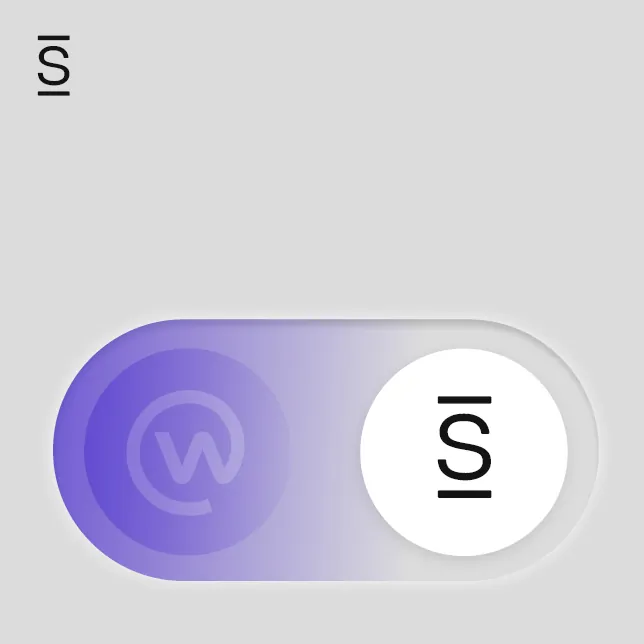Enterprise collaboration tools like Slack, Zoom, and Microsoft Teams have inundated the news as many companies shift toward mandated work from home policies due to COVID-19. It’s natural that these types of remote technologies take center stage as organizations scramble to normalize the world’s unprecedented remote workforce shift.
Slack and Zoom make it easy to keep in constant contact with small teams or individuals working from home, but it’s not enough. Let’s not be mistaken, productivity and collaboration tools are powerful, but as social distancing continues, organizations need to understand the ramifications of shelter in place and how to utilize remote working technologies properly to address what’s being neglected: connecting employees to the broader organization.
What your remote communications toolkit is missing
So what’s the best technology or solution for a remote workforce? Often overlooked, it’s a platform that can streamline top-down critical information while aligning and connecting employees organization-wide: the modern intranet. A modern intranet or an internal communication platform fills in the gap that the most-often talked about enterprise technologies miss.
While productivity software is designed for employee-to-employee communication and real-time collaboration, the intranet is purposefully designed to streamline critical top-down communications especially for a remote workforce. It’s important to make the distinction between traditional intranets and modern intranets. Modern intranets are different from the intranets of the past. Among many other differentiators, modern intranets can alert and deliver instant updates to employees from anywhere, without relying on the help of IT. And in times like this, it’s absolutely critical to be able to reach remote employees instantly.

Filling in the remote work communications technology gap
Having multiple kinds of technology is key to empower employees to work efficiently, but we must recognize how to appropriately use each remote work tool to not only keep employees productive but to preserve company culture and connection.
Productivity and collaboration technologies do not address the human need to feel engaged and aligned with an organization. When your entire workforce is working remotely, it’s inevitable that employees will begin to feel uncertain about where they stand. To make matters worse, prolonged isolation leads to loneliness and can affect an employee’s self-esteem and sense of motivation. Employees are looking up to leaders for guidance, clarity, and direction, not the timeline of the next product launch.
Organizations need a modern intranet to provide a:
- Source of truth for critical information that reach every remote employee, without getting lost
- Virtual watercooler to strengthen company culture, identity, and social connections
- Trusted place to help remote employees find what they need, like the latest documents or experts across the organization
Without a source of truth, what often happens is, critical updates and messages get lost, rumors begin, and uncertainty heightens sensitivities. Because we have more tools in our digital workplace than ever, misinformation can spread like wildfire across disparate channels.
How to utilize remote working communications technology effectively
There are countless enterprise collaboration tools available for remote employees. The chart below outlines the appropriate use cases for each remote work tool. Hopefully, this chart will help serve as a guideline if you’re looking to assemble or complete your work-from-home tool stack:
List of the Best Remote Work Tools
| Remote Work Tools | Best-of-Breed Example | Why You Need It | How It Should Be Used |
|---|---|---|---|
| Web conferencing | Zoom | To replicate the conference room | Meeting face-to-face for longer discussions |
| Team messaging | Slack | Instant feedback and collaboration | For primary communication among team membersWhen you need immediate answers |
| Office productivity suites | Google Suite | Excellent for real-time collaboration | A standard productivity suite for the entire organization for easier collaboration |
| Modern intranet or an internal communication platform | Simpplr | Highlight important communications that could get lost in Slack and email Keep employees in touch with other departments and the broader organization | For two-way communicationsTo create a virtual water cooler for employees to connectFor departments to share updates with the broader organizationTo find experts and help across the companyTo provide employees a gateway to their broader digital workplace |
| Google, Outlook | Legacy tool that the entire company is familiar with | If you are communicating outside of your organizationIf a response is not required in the next 24 hours | |
| Everything else | Salesforce, Workday, Concur, etc. | Sales, HR, expense management | Make accessibility easy |
Note that intranets do not replace any of the remote work tools in the chart above. Each technology is designed for a specific purpose and is most effective when used appropriately. For example, Slack channels shouldn’t be used to share critical company updates because it risks getting lost in newer activity posts.
Don’t have an intranet? Deploy Simpplr in 2 weeks
Are you missing a modern intranet that connects your remote employees to the broader organization? We’ve had many prospects and customers come to us amid COVID-19. As many organizations are now realizing their remote work technology gaps, we’re offering our special deployment package to get organizations up and running quickly within 2 weeks. The gap in your communications infrastructure may widen as shelter in place continues – don’t leave your remote employees feeling detached and uninspired.

















